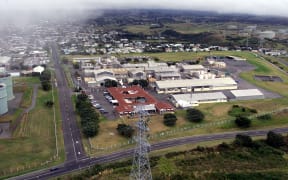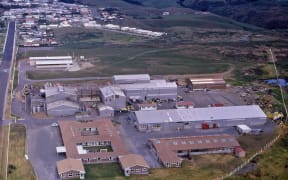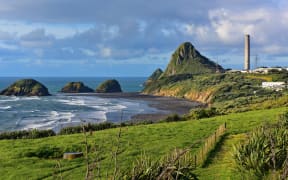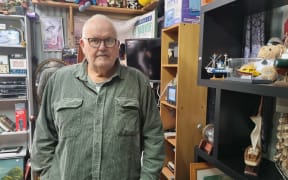
Banners at Luke and Justin Selby's makeshift campsite at the boundary of the former Ivon Watkins Dow chemical plant. Photo: RNZ / Robin Martin
Community activists have pitched camp on the boundary of a former chemicals plant in New Plymouth to advocate for it to be turned into nature reserve.
Brothers Luke and Justin Selby grew up in the path of emissions from the Ivon Watkins Dow
From the 1960s through to 1987, Ivon Watkins (later Ivon Watkins-Dow) made the herbicide 2,4,5-T which contained the toxic dioxin TCDD, at Paritūtū.
The herbicide was a key component of Agent Orange - the defoliant used by the US military in the Vietnam War - which has been linked to cancers and birth defects.
Luke Selby wanted Dow Chemicals to help put things right.
"We feel a lot of grief about what has gone on here but you can't undo the past. For us our focus is on healing the people in the land and we call ourselves the Paritūtū Kaitiaki Whānau.
"What we want from them is very simple. We want them to clean up the site and also full disclosure and clean up of all the other toxic dumps around here.
"We want them to gift the land back to the community - whether that's to iwi or the community would be up to them I presume - and we would like a small amount of money from them to beautify the land with the right natives that will slowly but surely suck up all the environmental corruption and also start healing the land while at the same time healing us."
The Selby brothers grew up on nearby Pioneer Road and Port View Crescent and lost both parents young.
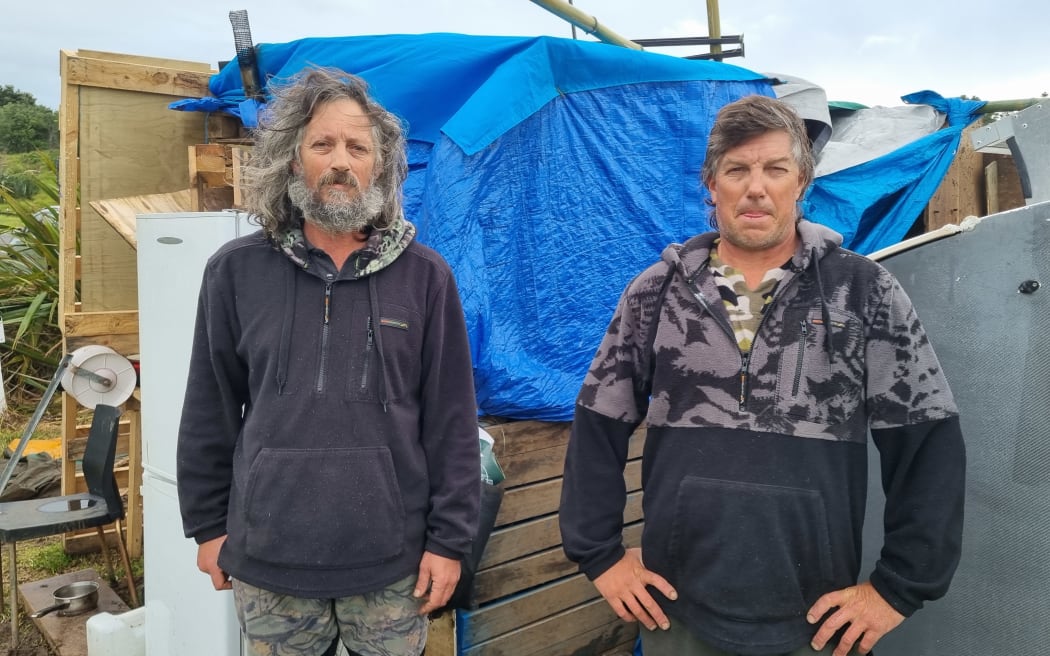
Brothers Luke and Justin Selby. Photo: RNZ / Robin Martin
But Luke said they did not want to re-litigate the whole IWD saga.
"We don't blame any one individual. All those people who made those decisions back in the day are no longer in positions of power, so we see it like this - we hate the sin but not the sinner.
"This isn't a personal attack on anyone it's just about righting the wrongs of the past."
Luke did harbour worries that the land might be contaminated.
"We're very concerned, but we're more concerned that they put residential, a big high-rise residential up there and people are going to live on it.
Justin Selby had drawn up the brothers' vision.
"This will be called Paritūtū Memorial Park and Native Bird Sanctuary. The basis of it is to create an awesome biodiversity using indigenous birds and plants.
"We're going to make nice little dells and coves to create micro-climates and raise and use porous materials for the tracks and use plantings of flaxes on the side that make it impenetrable to go off the tracks.
"The theory is that there shouldn't be any poison or dioxin coming up from the soil."
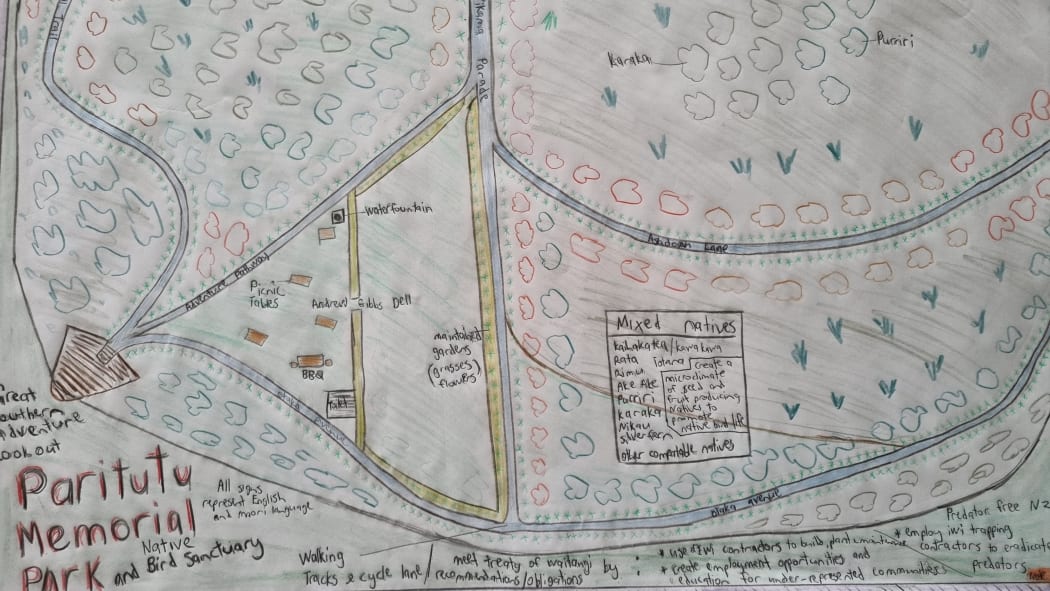
Justin Selby's hand drawn plan for Paritūtū Memorial Park. Photo: RNZ / Robin Martin
Justin's hand drawn plan of the park had feature plantings of karaka and pūriri trees, flaxes and grasses, walking tracks and picnic areas - one dedicated to dioxins campaigner Andrew Gibbs.
"It's about people power not poison power," said Justin. "We are not here to demonise the company or name names. We want this to be a positive look into the future."
The most recent operator of the Paritūtū plant, Corteva Agriscience, closed it in 2022 and has demolished the buildings, leaving concrete pads over much of the site.
Dow Chemicals took back ownership of the site earlier this year and has committed to cleaning it up.
It presented a draft remediation plan to the Taranaki Regional Council in February which said site investigations were likely to take between two and four years.
"Site remediation will be guided by the findings of the earlier investigations and will likely take a further two to four years to complete," the plan said.
In more recent weeks, Dow's remediation contractor Tonkin & Taylor has been running a online survey for any one involved the Paritūtū plant to try and gather information about how chemicals were used at the site that might not have been previously recorded.
The survey which involved advertising and letter drops in the area closes today.
New Plymouth mayor Neil Holdom said any decision on what to do with the site would have to wait for the results of soil testing.
"It's got a toxic legacy under the ground and my primary focus is to clean that up as best as possible and what happens after that I'm not so worried about. It's really what can we do now to protect people and the environment."
Holdom said it was his view that there would be significant chemical contamination under the ground, but he was open to the idea of a park.
"It may be that it becomes part of the park-like landscape already in the area. That would be potentially a really great outcome, but lets see what's under the ground first and make it as safe as we possibly can.
"Then there is a discussion to be had about what they long term future of the site and I think there's the opportunity to discuss that with Te Aitawa, Taranaki iwi, the hapu involved and the wider community."
Holdom said ultimately the site was privately owned and if Dow could made it safe they had the legal right to do whatever they liked with the site, including on-selling it to another industrial user or attempt to get it re-zone residential - although he thought these options would be difficult given the site's history.
